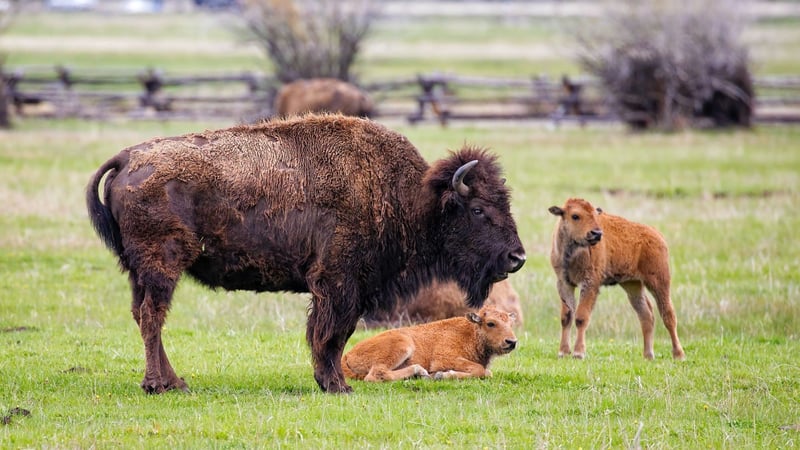
Reporter’s Reaction to Bison in Yellowstone Teaches An Important Lesson About Respecting Wildlife
Blog
When reporter Deion Broxton saw a herd of bison coming his way in Yellowstone National Park, he quickly packed up his camera and got into his car. But his reaction is an important lesson in leaving wild animals alone.
The Internet was abuzz last week when a video KTVM reporter Deion Broxton posted to his Twitter account went viral. “Oh no, I ain’t messing with you,” he says as his face looks visibly scared as a herd of bison heads towards him (outside of the video frame). Lucky for us, the camera was rolling.
If you haven’t seen Deion Broxton’s tweet, which has more than 80,000 retweets and 11.1 million video views, you can check his hilarious reaction below.
But this viral social media post has a subtle message that everyone should listen to: leave wild animals alone.
Interacting With Wild Animals in the Wild
A question we often get is “how can I interact with wild animals in their natural habitats?” The answer: you don’t.
One of the most important things you can do is keep your distance. Wild animals, while curious, do not want to be touched or chased. By observing from a distance, you’re allowing the animal to behave naturally and undisturbed. It’s also the safest way for a wild animal encounter.
Don’t feed wild animals! It may seem like you’re helping, but feeding wild animals causes the reverse effect. Giving wild animals food increases their dependency on humans and makes them more likely to travel to highly populated areas in search of food. These animals are often hit by fast-moving vehicles or, if they’re predator species, killed to protect the human residents. It could also leave animals vulnerable to poachers as they usually become calm and unafraid of humans.
Wildlife Attacks Can Mostly Be Avoided
While World Animal Protection advocates for seeing wild animals in their natural habitats instead of some of the world’s cruelest attractions, it’s important that people keep their distance to protect not only themselves but the animals they love.
That’s not always the case. In early March, a woman was kicked by a moose in Colorado after she tried to pet the animal. She was cited for harassing wildlife and called out by the Colorado Parks and Wildlife office, which has to continuously advocate for leaving wildlife wild. They note on their website that many parks require a minimum of a 25-yard distance between visitors and wildlife. This extends to 100 yards for predators like wolves and bears.
In February, a video surfaced of a man slapping a Hawaiian monk seal, who was startled awake and chased the man. Monk seals are protected by law and harassing one is a class C felony punishable by jail time and fines.
These kinds of incidents are unfortunately common. A study by Jack H. Berryman Institute and Department of Wildland Resources at Utah State University found that more than 47,000 people seek medical care after being bit or otherwise attacked by wildlife each year. Many of these injuries and attacks can simply be avoided by staying far enough away from wildlife.
Wild Animals in Captivity
Up to 550,000 animals are held in captive environments around the world. Many are snatched from natural habitats, forced into captivity and subjected to abuse, both mentally and physically, in the name of entertainment and profit. Others are bred into a lifetime of suffering.
Often these captive animals exhibit stereotypical—abnormal and repetitive—behavior from their lives in captivity. These repetitive motions are a sign of psychological distress in animals and include but are not limited to: elephants swaying back and forth while bobbing their heads; dolphins swimming in repetitive circles in tiny tanks; big cats pacing back and forth in enclosures too small, and orcas and other cetaceans beaching themselves on performance platforms or gnawing on and ramming into gates.
Horrific training techniques ensure the animals are submissive enough to perform tricks, spend their long lives chained, and continuously give rides to paying tourists. Bullhooks (sharp training tools used to hit or stab elephants) remind the elephants of their abusive training and human dominance.
To protect wild animals around the world, commit to only seeing these animals in the wild and keeping a safe distance by signing our Wildlife. Not Entertainers pledge today.